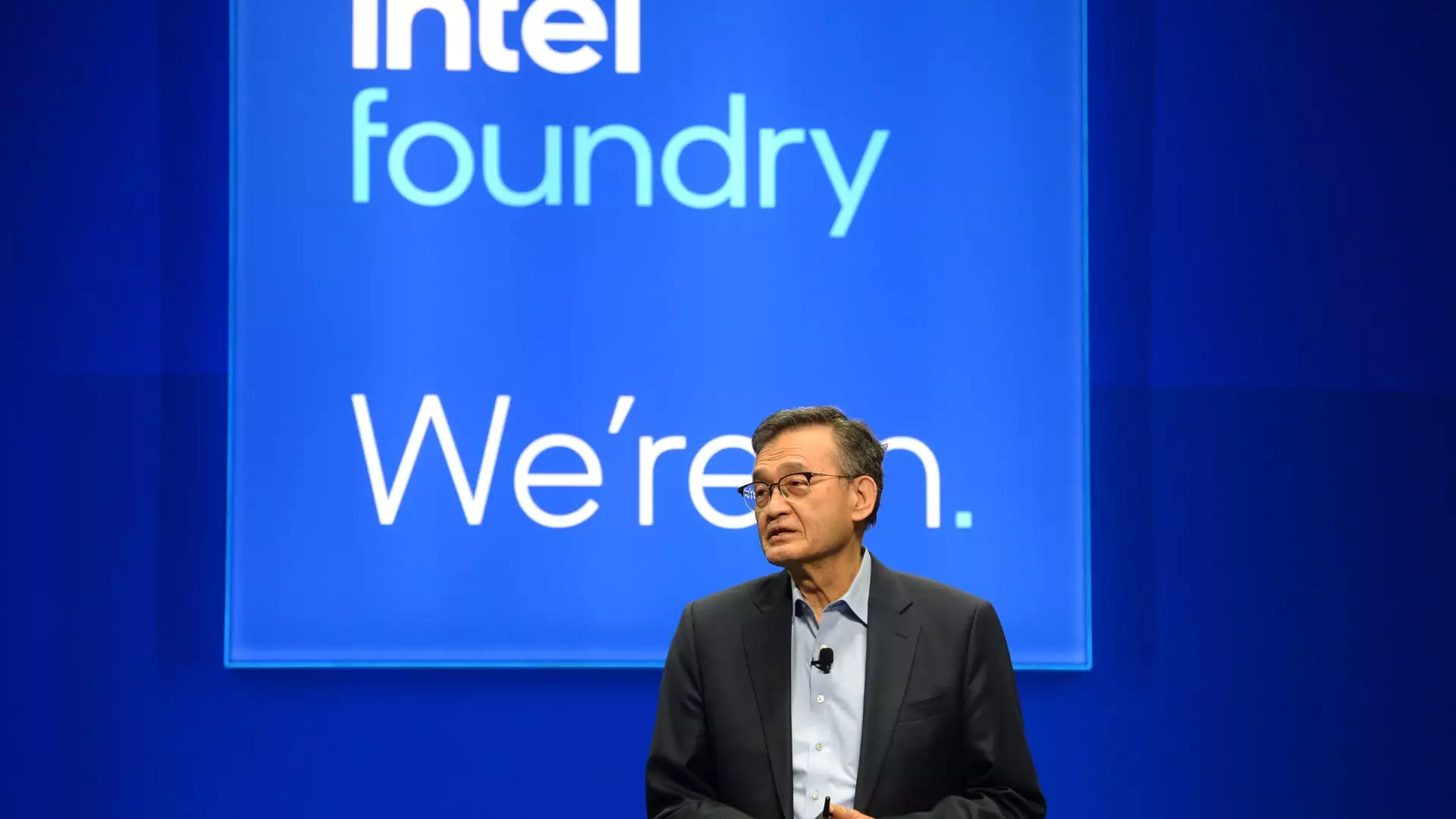Intel stands at a pivotal crossroads, faced with the daunting reality of a declining stock and mounting skepticism from investors. Despite reporting better-than-expected earnings, the company’s decision to drastically cut foundry costs signals a profound shift in corporate strategy—one driven by necessity rather than choice. In an industry defined by rapid innovation and fierce competition, Intel’s acknowledgment of its failed external foundry ambitions reveals a deep internal crisis. Yet, paradoxically, this recalibration might hold the key to refocusing its core strengths and fostering genuine growth in a saturated market.
The company’s decision to potentially halt or even entirely discontinue its foundry operations underscores a tough acknowledgment: the external foundry business, as currently structured, is not delivering the desired results. Intel’s inability to secure significant third-party clients for its advanced manufacturing nodes reflects broader industry challenges. Building state-of-the-art fabs is capital-intensive and risky, especially when trust and long-term commitments from potential customers remain elusive. The company’s candid admission of uncertainty—”prospects are uncertain”—is a sobering reflection of the harsh realities facing it today.
Challenges in a Market Dominated by Giants
Intel’s struggles cannot be viewed in isolation. Their difficulties in finding external clients for their cutting-edge nodes highlight the dominance of existing industry leaders like TSMC and Samsung. These companies have a proven track record of delivering advanced manufacturing processes and cultivating long-term customer relationships, creating formidable barriers for Intel’s emerging foundry ambitions. While Intel has historically been a leader in chip manufacturing, the recent years have seen it lose ground due to strategic missteps, underinvestment, and a failure to anticipate the explosive growth of artificial intelligence and data-centric computing.
The company’s difficulty in making headway with the artificial intelligence market further complicates its turnaround efforts. Nvidia’s dominance in AI accelerators has sidelined Intel as a secondary player, which is problematic considering the high-margin potential of AI chips. Without confident high-volume markets to prop up its manufacturing capabilities, Intel’s long-term viability in the foundry space remains questionable. The recent capex cuts in Europe and slowed production at Ohio underscore a company retreat, perhaps signaling an acceptance that doubling down on existing manufacturing facilities without assured customers is untenable.
Leadership’s Defensive Stance and Future Risks
CEO Lip-Bu Tan’s candid memo indicates a leadership grappling with the enormity of its strategic errors. His admission that the company “invested too much, too soon” paints a picture of a management team that overestimated demand and underestimated execution challenges. The elimination of 15% of the workforce, along with plant shutdowns, suggests a painful but necessary slimming down of operations. Clearly, Intel is acknowledging that its previous model—scaling up manufacturing capacity in anticipation of future demand—was unsustainable.
However, this stance introduces significant risks. Diminished capacity and uncertain customer pipelines could hinder Intel’s ability to reclaim technological leadership. The negative stock reaction, wiping out most of its gains for 2024, further demonstrates that investors remain unconvinced of Intel’s ability to adapt swiftly enough. While some analysts view the retrenchment as a “positive step,” skepticism persists about whether Intel can reinvent itself swiftly enough to compete effectively against more agile rivals.
The Road Less Traveled: Opportunities for Reinvention
Despite the bleak outlook, Intel’s current upheaval may serve as a catalyst for genuine reinvention. Focusing on core competencies—packaging higher-margin chips, developing bespoke solutions for data centers, and investing in niche semiconductor markets—could enable Intel to carve out a sustainable future. The successful deployment of its upcoming 14A process could position Intel as a leader in specialized manufacturing, even if it abandons broader foundry ambitions.
Moreover, embracing transparency about its struggles and laying out a clear, execution-focused strategy might restore some investor confidence. Intel’s willingness to cut losses and pause risky expansion signals a company that is finally aligning resources with realistic market expectations. While the immediate outlook appears turbulent, this painful recalibration offers an opportunity to shed legacy baggage, streamline operations, and concentrate on markets where Intel has genuine competitive advantages.
In the end, Intel’s journey is emblematic of a larger industry truth: staying ahead in semiconductors requires relentless innovation, strategic clarity, and the humility to pivot when necessary. Its future depends on whether it can leverage its existing strengths, regain manufacturing excellence, and build trust with customers—no longer chasing the elusive dream of industry dominance but instead focusing on sustainable, niche leadership where it can truly excel.


Leave a Reply